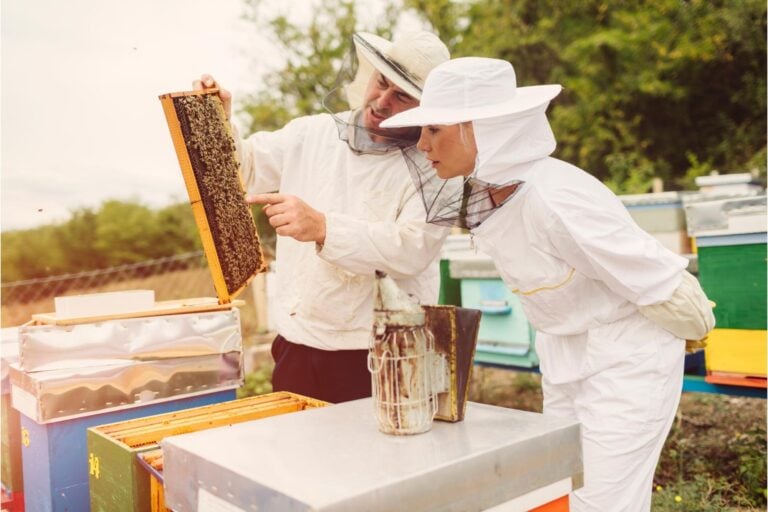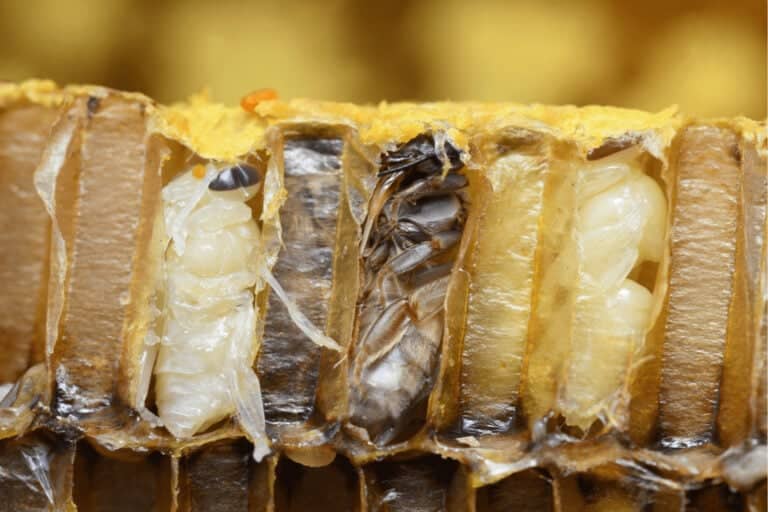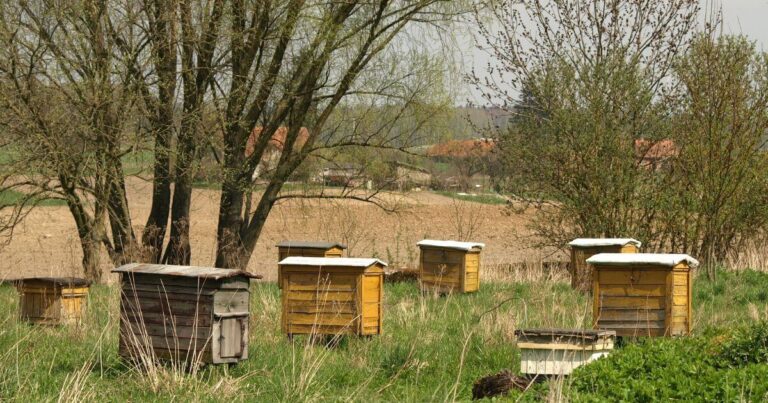Australian Native Bees – An Introduction
Australian native bees are vital pollinators of Australia’s unique flora and are an important part of bushland. Find out more about native bees in Australia.
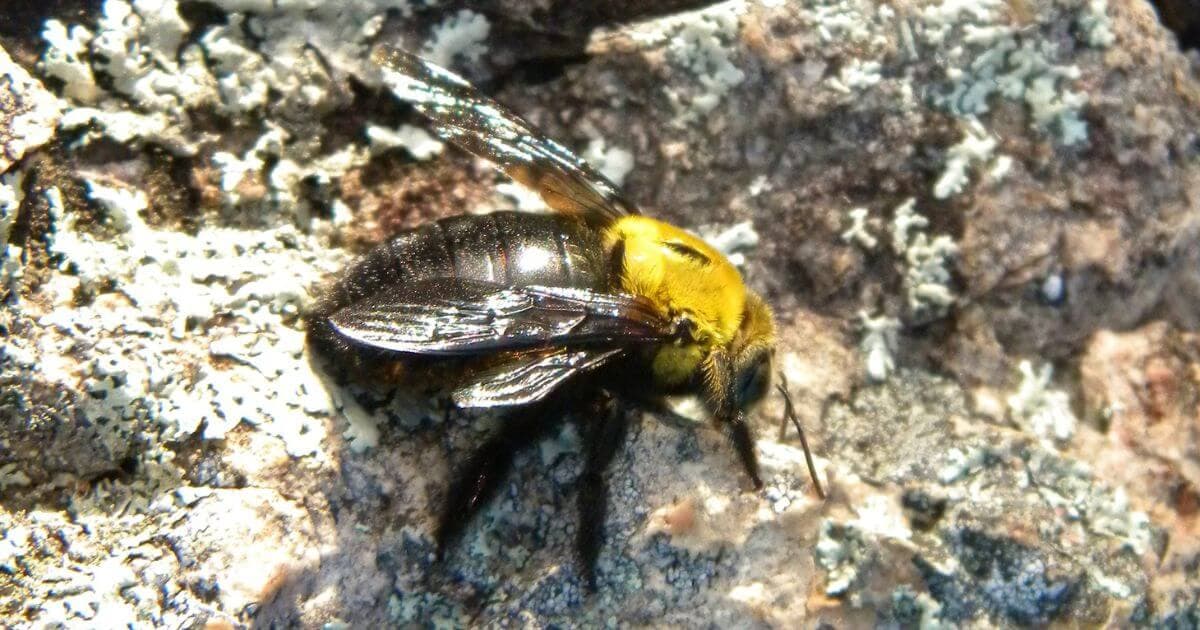
Australian native bees are important to Australia’s native flora and bushland.
It may surprise you that honey bees, while beneficial for the environment and ecosystem, are not native to Australia. They were introduced in 1822!
The bees you typically see are European honey bees (Apis mellifera).
Before honey bees were introduced, there were, and still are, some 1600 species of Australian native bees.
They come in all shapes, sizes and colours – black, yellow, red, metallic green, blue polka dotted and striped! Some are fat and furry, while others are sleek and shiny.
Take the stunning blue banded bee – a non-honey producing native bee.
Due to their small size, some native bees can be confused with flies.
At their extremes, Australia’s tiniest native bee, measuring just 2mm, comes from Cape York and is known as the Quasihesma bee.
On the other end of the spectrum, Australia’s largest native bee, the 24mm long Great Carpenter Bee, can be found in the tropical north and northern New South Wales.
While there is great diversity among species, there are some similarities between Australian native bees.
Unlike the introduced honey bee species that tend to live in large colonies, native varieties are usually solitary bees.
Rather than lay their eggs in a hive, female native bees raise their young in burrows in the ground, or in tiny hollows in timber.
Do native bees make honey?
Most Australian native bees are pollinators only and do not make honey.
Stingless bees are the only native bees that make honey – an aromatic, tangy honey called ‘sugarbag’. However, only small amounts are produced by hives.
Remember, bees that produce honey do so to ensure a food supply and to feed their young.
Given Stingless bees produce only a little honey to feed their young, it’s not recommended to help yourself with their honey, or it could have devastating effects on the bees. They could be left without food for the winter or drown due to damaged honey caps.
Professional beekeepers skilled at extracting Stingless bee honey (in warmer climates with more food sources) are best left to it.
Do Australian native bees sting?
Most Australian native bees have stingers.
However, some native bees are so small, their stinger is unlikely to penetrate human skin. In addition, because their stingers are not barbed, the act of stinging doesn’t result in the bee’s death.
Eleven species of native bees do not sting (genera Tetragonula and Austroplebeia).
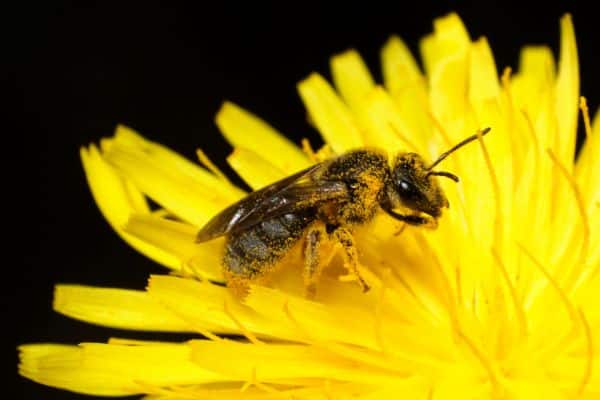
Interestingly, the honey of these native stingless bees is delicious and is becoming a local delicacy, making stingless beekeeping more popular.
Types of Australian native bees
The ten major groups of native bees are:
- Stingless Bees
- Yellow and Black Carpenter Bees
- Green Carpenter Bees
- Reed Bees
- Blue Banded Bees
- Teddy Bear Bees
- Leaf-Cutter Bees
- Resin Bees
- Homalictus Bees
- Masked Bees
Preferring warm climates (and not residing in Victoria), the Stingless Bee is the only bee currently available for sale in Australia.
Beekeepers transfer the nests into small hive boxes and can propagate the nests by splitting these hives.
These hives can be used for both honey production and crop pollination; however, the hives will only survive in the cooler climates of New South Wales, the Australian Capital Territory, Victoria, South Australia and Tasmania with special artificial support.
As our native bees are solitary and do not have a social colony structure, most do not store excess honey in their nests; however, they play an important role in the bush as pollinators.
Are bumble bees native to Australia?
Bumble bees are not native to Australia.
Large earth bumblebees (Bombus terrestris) are large, fat, hairy bees that can be found in Tasmania. They can sting repeatedly and make a loud buzz when flying.
However, Large earth bumblebees are an invasive species from Europe. They compete with Australian native bees for resources. Through their pollination efforts, they can also encourage the spread of certain weeds.
Any sightings of bumblebees or any other invasive species in Australia should be reported to the Department of Agriculture, Fisheries and Forestry.
Are honey bees bad for native bees?
According to research from Curtin’s School of Molecular and Life Sciences, honey bees may be bad for some Australian native bees, especially when the honey bees and native bees prefer the same flowers.
“Not all native bee species were impacted, but when native bees preferred many of the same flower species as honeybees or were of larger body size, meaning they needed more food, this was when honeybees had a negative impact on native bees,” lead author, Miss Prendergast said.
Because they have a hive to protect, honey bees tend to be more territorial than solitary native bees. However, both honey bees and native bees can and do co-exist in the environment, with native bees opting to avoid areas with busy hives.
How to attract native bees
Focusing on the environment is important if you want to help save the bees. Learning how to attract Australian native bees into your garden is a great start.
As we discussed in The 3 basics of a bee-friendly garden, a bee-friendly garden will encourage bees to collect pollen and nectar from your own backyard.
Creating these localised habitats makes a huge difference, not only to the life of bees but also to the ecosystem.
One of the best ways to do this is to plant flora that bees enjoy.
For native bees, some good suggestions are cut leaf daisy, flowering gum, pincushion hakea, tea tree, purple coral pea, grevilia pink surprise, native rosemary and bottlebrush.
_
Want to try some delicious, local Australian honey? Buy Ben’s Bees pure raw honey.

